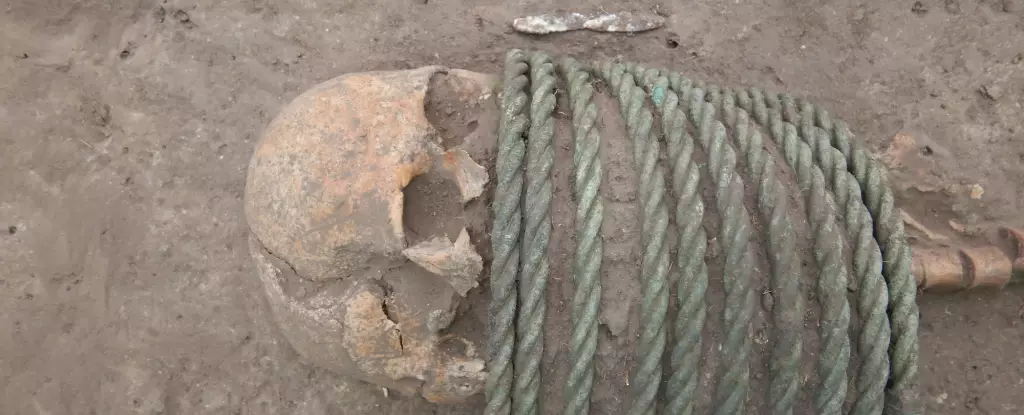In a remarkable archaeological discovery, a 1,000-year-old cemetery near Kyiv, Ukraine has unveiled a mass grave of over 107 skeletons, offering a window into the enigmatic Dark Ages. The grave site, believed to be from the pagan era, has also revealed a fascinating array of artifacts, including axes, swords, spears, jewelry, bracelets, and even food remains such as eggshells and chicken bones. Led by researchers Vsevolod Ivakin and Vyacheslav Baranov, the excavation has provided valuable insights into the ancient history of the region.
A Window into the Dark Ages
The Dark Ages, a period spanning 1,000 years between the fall of the Roman Empire and the Italian Renaissance, has always been shrouded in mystery. However, this recent discovery offers a rare glimpse into the lives and customs of the long-forgotten people of this era. The weapons found at the burial site, identified as typical for the medieval political federation of Kyivan Rus and northeastern Europe, provide valuable evidence of the cultural and historical context of the time.
Pagan or Christian Rituals?
One intriguing find at the cemetery is a stone altar, which could have been used for either pagan or early Christian rituals. This ambiguity hints at the religious transition taking place during this period of Ukrainian history. The presence of female skeletons adorned with elaborate neck rings, believed to be a form of social marker, raises questions about the role of women in this society. The researchers presented their findings at the Archaeological Institute of America’s annual meeting, shedding light on the religious and social dynamics of the Dark Ages.
Another fascinating aspect of the burial site is the discovery of wooden buckets placed on the feet of some male graves. Similar to funerary rituals observed in 11th-century Prussian cremation and Pomeranian and Masovian inhumation cemeteries of military elites, these findings provide valuable insights into the burial practices of the time. The artifacts uncovered in the Baltics, which share similarities with those found in Ukraine, further suggest connections and influences between these regions.
The findings of the cemetery speak to a significant religious shift in Ukrainian history, signaling the arrival of Christianity in Eastern Europe. The baptism of Volodymyr the Great, who converted to Christianity around 987, marked a turning point in the region’s religious landscape. The archaeological evidence supports this historical transformation, highlighting the complex interplay between religious beliefs and cultural practices in the Dark Ages.
According to Vyacheslav Baranov, one of the lead researchers, the discoveries in Ukraine align with broader pan-European historical processes. The nature of the small and closed group buried in the cemetery is a rarity for the time, suggesting a distinctive social dynamic. The research emphasizes the importance of studying the pan-European history as a whole and understanding the European peoples in their broader context.
Despite the challenges posed by the ongoing war in Ukraine, the archaeological project has persevered. The research, which began in 2017, continued in 2022 and 2023, despite the loss of team members due to conflict. The collaboration between various research centers, as well as the support from organizations like the German Research Foundation, has enabled the excavation to proceed. The determination to uncover the secrets of Ukraine’s ancient past remains unwavering, even in the face of adversity.
The recent discoveries in the ancient Ukrainian cemetery have brought to light significant insights into the Dark Ages and the historical and cultural complexities of the time. From the enigmatic burial practices to the religious transitions and social dynamics, these findings have expanded our understanding of Ukraine’s past. As ongoing research continues to unveil more secrets, the story of the cemetery and its inhabitants promises to shed further light on this fascinating chapter in European history.


Leave a Reply